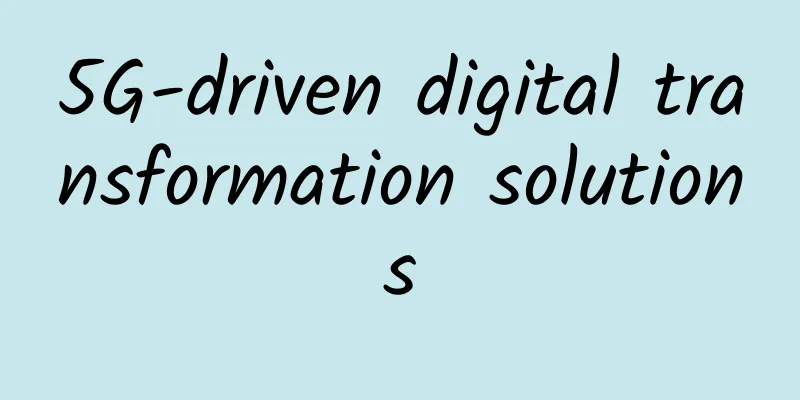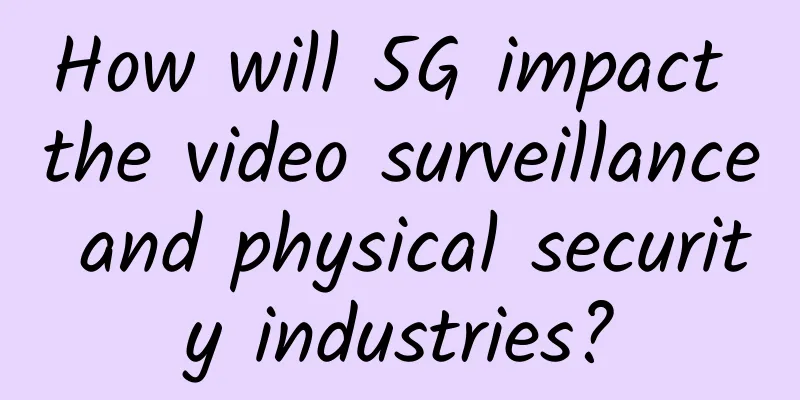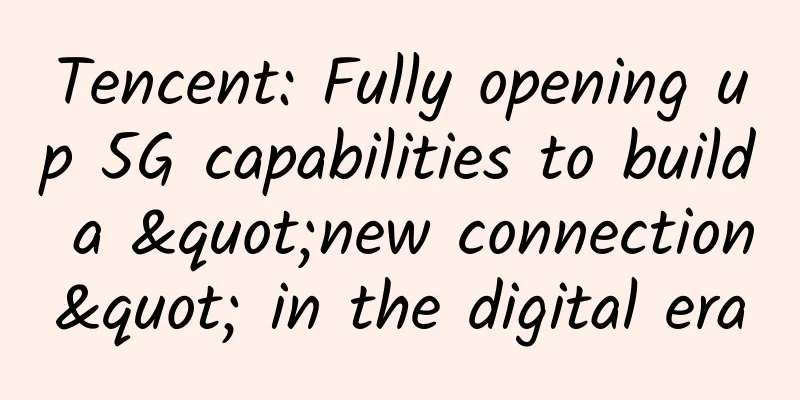5G-driven digital transformation solutions

|
【51CTO.com Quick Translation】 According to the forecast of the research organization in 2019, by 2025, there will be 1.2 billion devices connected by 5G in the world, which will cover 34% of the world's population. Although the outbreak of the COVID-19 pandemic has affected the publicity and hype of 5G, it is still the most watched technology event in 2020. With the advent of 5G, a whole new range of applications has emerged. We will witness 5G opening new doors for enterprises to provide efficient services and product innovation, thereby creating new customer groups and revenue streams on a large scale. This article will analyze how 5G will bring changes to some industries and introduce some business cases. 1. HealthcareThe medical journal The New England Journal of Medicine pointed out in an article that the healthcare industry will generate a large amount of data, and each patient typically generates about 80MB of data per year. In another article titled "How 5G and Related Technologies Will Revolutionize the Healthcare Industry," the author mentioned four major flaws affecting the healthcare industry: lack of a patient-centric system, lack of personalization, lack of accessibility, and insufficient attention to data. Experts believe that the impact of 5G will address these shortcomings through its lower latency capabilities and higher data collection capabilities. When hospitals adopt 5G technology, they will reduce the time to capture, transmit and manage data in real time, support high-quality real-time video through mobile networks, improve remote patient care access capabilities, and ensure enhanced network security through cloud-based data centers. With the booming development of wearable technology compatible with 5G, patients can more easily communicate with doctors remotely and update their vital signs at any time. People expect 5G to make greater progress in changing the healthcare scenario. The COVID-19 pandemic has put tremendous pressure on medical institutions around the world, and they deserve more help. 2. RetailAccording to analyst firm Statista, e-retail revenues are expected to grow to $6.54 trillion by 2022. With the introduction of 5G, retail chains around the world will be transformed with the right connectivity – reliable and fast networks, sophisticated AR/VR use cases, and warehouse-specific applications to help them achieve higher performance. So one question remains – how can 5G help the retail industry?
3. Public sectorAs 5G develops, compliance with regulations will be a top concern for the public sector. The public sector recognizes the impact 5G will have, but in order to properly regulate, government agencies and the public sector must understand the technology and take full advantage of 5G while complying with the law. Due to the large amounts of data collected using 5G technology, the ongoing threat of data breaches will violate relevant laws. However, once the technology is within the control of government agencies, the following use cases need to be discussed:
4. MediaIn a survey commissioned by Intel, it is expected that by 2028, 5G-enabled media and entertainment experiences will generate up to $1.3 trillion in revenue worldwide. In home and industrial networks, the 5G technology stack opens up new ways to provide richer media experiences for consumer devices. This will include lightning-fast data speeds, huge bandwidth, and low network latency. Here’s a look at how 5G will revolutionize the world of media and entertainment:
5. ManufacturingTo understand how 5G technology will transform the manufacturing industry, here are some use cases relevant to industrial operations:
6. Supply ChainBesides offering commendable speeds, 5G technology also focuses on increasing device density and reducing latency, which is said to change the way work is done across industries. In the use cases of 5G supply chain applications, the industrial sector can achieve reliable logistics operations by automatically marking, tracking and recording shipments compared to manual tracking. This will help them solve challenges such as lost goods and misplaced containers. In terms of inventory and warehouse management, 5G will help optimize processes, enable remote maintenance and control, and provide assistance for autonomous vehicles. Looking ahead to the future of supply chain management, 5G provides what people want - transparency across channels and the ability to ensure control is at a central command node. 7. Smart HomeToday’s smart home technology provides the user experience that 5G needs to address. 5G is designed to provide a seamless experience for home users – from the right room temperature to favorite lamp shades, entertainment facilities and kid’s suites, fitness and health equipment, and door access security features. In addition to seamlessly coordinating home devices, the technology stack will also pay more attention to improving data privacy and security from an ethical perspective. 8. Augmented Reality/Virtual RealityA survey report released by Ericsson shows that augmented reality will account for 50% of the immersive video format market revenue by 2030. The exciting use case of augmented reality is to take the live experience and transform it into a digital experience. When augmented and virtual reality are combined with mixed reality, experiences such as concerts, movie premieres, video games, sporting events, retail fashion, and even family planning, education, and advertising will offer exciting development prospects. 9. Transportation5G makes logistics life simpler. The highly reliable, low-latency technology stack has proven beneficial to the transportation industry through multiple use cases. Smart sensors can monitor road conditions and measure stress levels to determine when to repair the road surface. Sensors proactively predict potholes on the road, allowing municipalities to take preventive measures. The technology will also enable cameras to provide real-time insights into traffic flow to redirect vehicles and pedestrians, improve traffic efficiency and urban safety. 5G will accelerate the popularity of self-driving cars, as well as the ability to support real-time response to vehicle safety status and automatic control to avoid collisions. 10. Internet of ThingsThe 5G standard provides new business cases for the Internet of Things. The technology industry realizes that it is difficult to provide end-to-end IoT solutions through cellular connectivity. It requires the right combination of multiple elements - expertise in embedded systems, connectivity, time-series-based systems, antenna design, cloud computing, etc. Telecom operators provide similar opportunities through 5G. So, what are the future business use cases of 5G-driven IoT? The first use is improved asset tracking solutions for regularly tracking small amounts of data, energy usage, or product condition. This further helps track whether products are produced and shipped in accordance with published safety and compliance requirements. The second is critical business applications in small factories for commanding and controlling AGVs and robots. The third use is connecting assets in restaurants, cafes, and brownfield areas to the cloud, transforming them into smart devices. 11. StorageThe close connection between 5G and high-speed flash memory will create many avenues for use cases in the storage industry. First, enabling virtual 5G networks in the cloud to ensure bandwidth, latency, and quality of service. Second, by enabling resolution conversion from 4K to 8K and beyond, 5G will become the backbone of high-resolution video streaming. Third, the introduction of comprehensive cloud computing gaming will enable video games to be played online and provide the opportunity to play games anytime, anywhere. In theory, 5G can solve some of the challenges currently faced by some industries, with its focus on seamless productivity. Enterprises will see 5G open new doors for enhanced service and product innovation, creating new customer segments and revenue streams at scale. It is clear that ultra-reliable low latency is the new currency in the network world, enabling new capabilities that were previously impossible in many industries. Now let's wait and see the actual deployment results of 5G. What are your expectations for the launch of 5G? Original title: 5G-Powered Digital Transformation Scenarios, author: Gaurav Aggarwal [Translated by 51CTO. Please indicate the original translator and source as 51CTO.com when reprinting on partner sites] |
<<: Aruba Again Named a Leader in Gartner Magic Quadrant for WAN Edge Infrastructure
>>: Can the commercial trial of 5G messaging truly open the door to the 5G economy?
Recommend
Scenario Innovation Smart Energy | Ruijie Debuts at 2019 Petroleum and Petrochemical Information Technology Conference
From May 15th to 16th, the "2019 China Petro...
5G news is coming! China Mobile has opened trial commercial services to 15 provinces: over 100 million users, no need to change to 5G phones
On October 14, at the "5G Message Ecosystem ...
Hawking: Automation and artificial intelligence could replace 77% of jobs in China
[51CTO.com original article] World-renowned physi...
What is 6G and the future of wireless?
While 5G is still being rolled out to replace the...
Huawei Cloud launches full-stack private cloud solution to support enterprise cloud transformation
[51CTO.com original article] Recently, the Huawei...
[11.11] iONcloud: $11.1/month - dual core/2G memory/60G SSD/3TB@1Gbps, Los Angeles/San Jose/Honolulu/Singapore data center
iONcloud, a site under Krypt that focuses on clou...
Lisa Host: Los Angeles Cera Data Center CN2 High Defense VPS monthly payment starts at 40 yuan, support 2 yuan/day trial
I shared information about Lisa hosts in the midd...
IPv6 Security Thinking: Risk Analysis of Recursive DNS in IPv6 Networks
DNS (Domain Name System) is an important core inf...
Do we really need 5G? Key facts you need to know
First, 2G was used for calling and texting, then,...
66 Cloud's 4th anniversary, 20% off monthly VPS and 40% off annual VPS, Hong Kong CMI/US CN2 GIA/AS9929/Japan Softbank, etc.
666clouds recently launched an event for New Year...
5G has been promoted for three years, why do some people still insist on using 4G? It turns out that I thought too simply
In recent years, there have been more and more vo...
802.11be (Wi-Fi 7) Technology Outlook
1. Overview of Wi-Fi 7 New Features Figure 1 is a...
RAKsmart: 5+253 IP cluster servers starting at $177 per month, with data centers in Los Angeles/San Jose/Japan/Hong Kong available
Earlier this month, we shared the popular cloud s...
RackNerd latest promotion starts at $11.38/year, San Jose/Seattle and other data centers
RackNerd has launched a new promotion for the US ...
WeChat PC version 3.0 official version detailed experience: friends' permissions are more convenient to view
WeChat PC version 3.0 is here, and this time two ...









